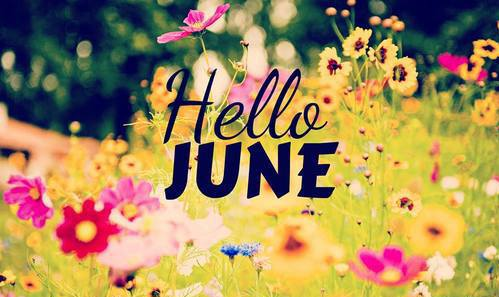
Welcome to this month’s Spotlight on June, named after the Roman goddess Juno, wife of Jupiter. We all know June is the sixth month in our calendar year but did you know that in the early Roman calendar, June was actually the fourth month and had only 29 days. In 46B.C, Julius Caesar gave June 30 days instead of 29 when he reformed the Roman calendar. In June, in the Northern Hemisphere spring ends and summer begins. It is the month that has the most amount of daylight hours. June is a busy month in the calendar with long standing traditions such as Father’s Day on the 19th and the spectacular Trooping the Colour on the 11th. The summer solstice also takes place, this year on the 20th but we begin the month with the start of Ramadan.
6th June – Start of Ramadan
Ramadan (also known as Ramadhan or Ramzan) is the ninth month in the Islamic calendar. It is a period of prayer, fasting, charity-giving and self-accountability for Muslims. Many Muslims fast during the daylight hours in the month of Ramadan. Fasting during Ramadan is one of the Five Pillars (fundamental religious duties) of Islam. It is common to have one meal known as the suhoor just before sunrise and an evening meal (iftar) after sunset during Ramadan. Ramadan is also a time for many Muslims to donate to charity by participating in food drives for the poor, organizing a collection or charity event, and other voluntary activities. This year, Ramadan will finish on 5 July. The month of fasting culminates with the festival of Eid ul-Fitr, which takes place either 29 or 30 days after the beginning of the month, and is determined by the first confirmed sighting of the new moon.
The timing of Ramadan this year impacts hugely on Muslim children sitting GCSE examinations and is further affected by June having longest daylight hours. GCSE’s can be a daunting time for all children and we wish everyone sitting their examinations the best of luck.
11th June – Trooping the Colour
The custom of Trooping the Colour dates back to the time of Charles II in the 17th Century. During these early days of land warfare, ‘colours’ (the brightly-coloured flags of a battalion) were used as rallying points so they would be visible above the smog and dust of battle. The aim was to familiarise each man with the coloured flags that identified his unit to guarantee all ranks would recognise their assembly point after battle. This impressive display of pageantry is now held on the occasion of the Queen’s Official Birthday. It is carried out by her personal troops, the Household Division, on Horse Guards Parade, with the Queen herself attending and taking the salute. Over 1000 officers and men are on parade, together with two hundred horses and over two hundred musicians from six bands. After the event, the Royal Family gathers on the balcony of Buckingham Palace to watch an RAF flypast. We have designed a crossword to celebrate Trooping the Colour. Why not click on the link at the bottom of this page and see how you get on.
19th June – Father’s Day
On the 19th June it is time to celebrate all fathers, grandfathers and father figures. Father’s Day owes its place in the calendar thanks to a woman called Sonora Smart Dodd. Sonora was inspired by the work of Anna Jarvis who was instrumental in creating Mother’s Day. In recognition of her father who had raised her and her siblings after the death of her mother, Sonora campaigned the American congress for a day to recognise fathers and father figures everywhere. Father’s Day has been celebrated in June since 1910. It is the fifth most popular date for sending cards and in a recent survey of most popular Father’s day gifts, ties, socks, underwear, sweaters, slippers topped the list. Why not have a go at making your very own Father’s Day card and try your hand at making our Father’s Day photo frame. We’re sure whoever you give them to will treasure them as hand-made gifts. Click the links below for full instructions.
20th June – Summer Solstice
The summer solstice marks the longest day of the year for those living in the northern hemisphere. “Solstice” comes from the Latin ‘solsitium’, or “sun stands still.” The sun does indeed appear to stand still on the solstice, as it reaches its highest point in the sky. This illusion occurs because the Earth is tilted as far as it goes toward the sun. The solstice marks the official first day of summer, and has been celebrated for its symbolic importance since ancient times. In England, pagans and travellers visit Stonehenge to watch the sun rise among the stones with the greatest spectacle being when the sun first hits the famous Heel Stone. However you plan on celebrating the summer solstice we suggest you make the most of it as the days only get shorter from here.
Shirt and Tie Father’s Day Card
Originally written 1 June 2016